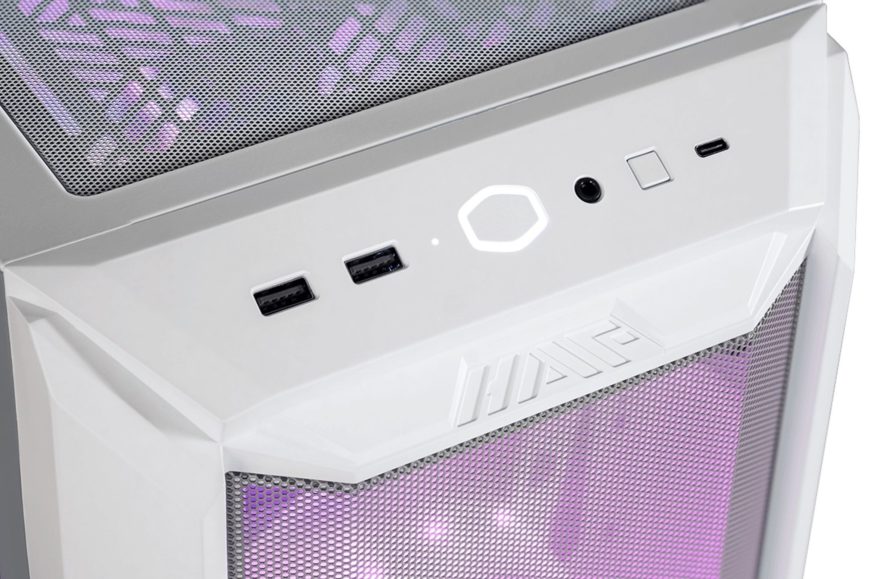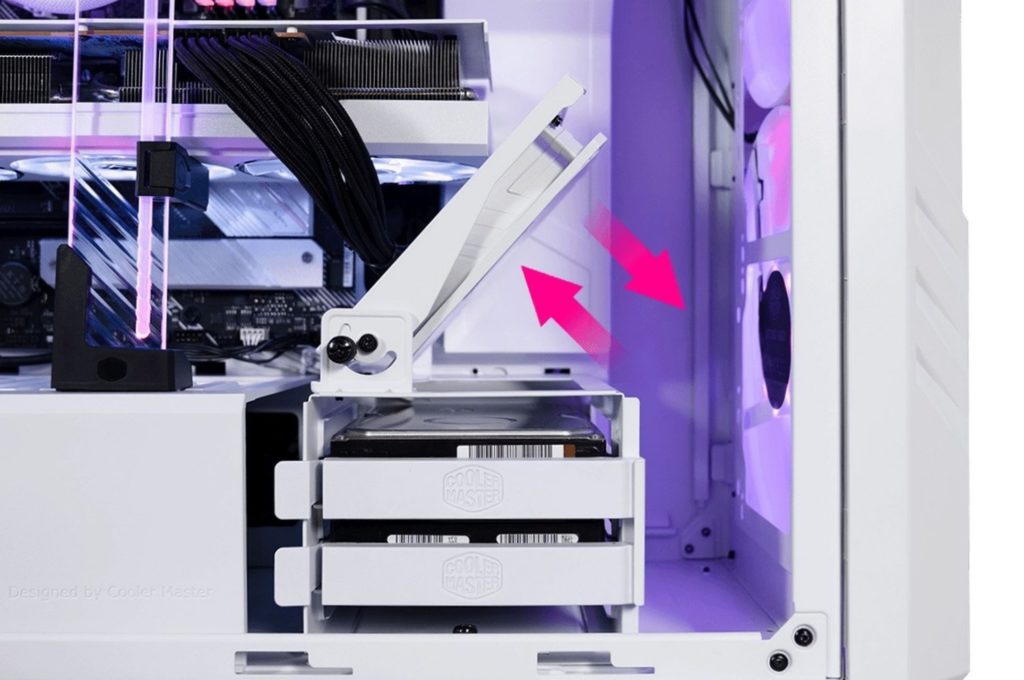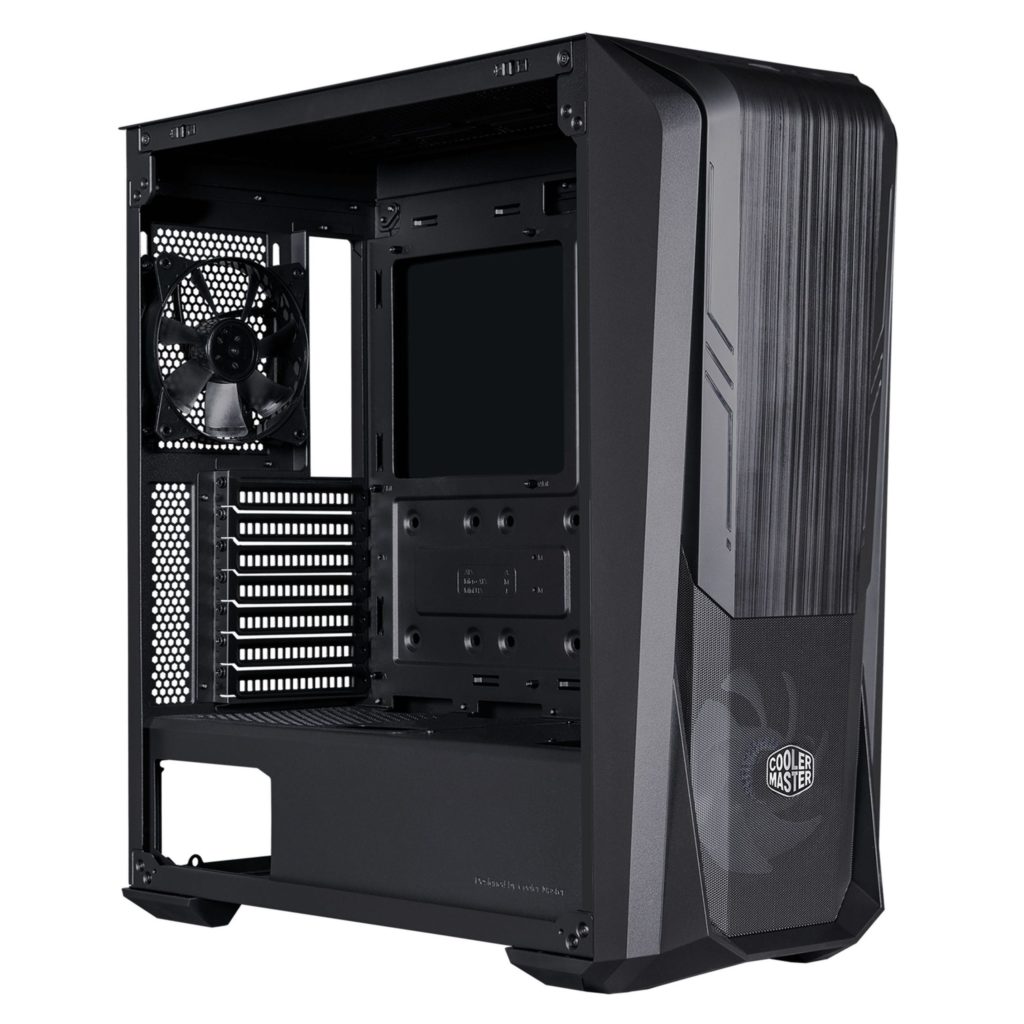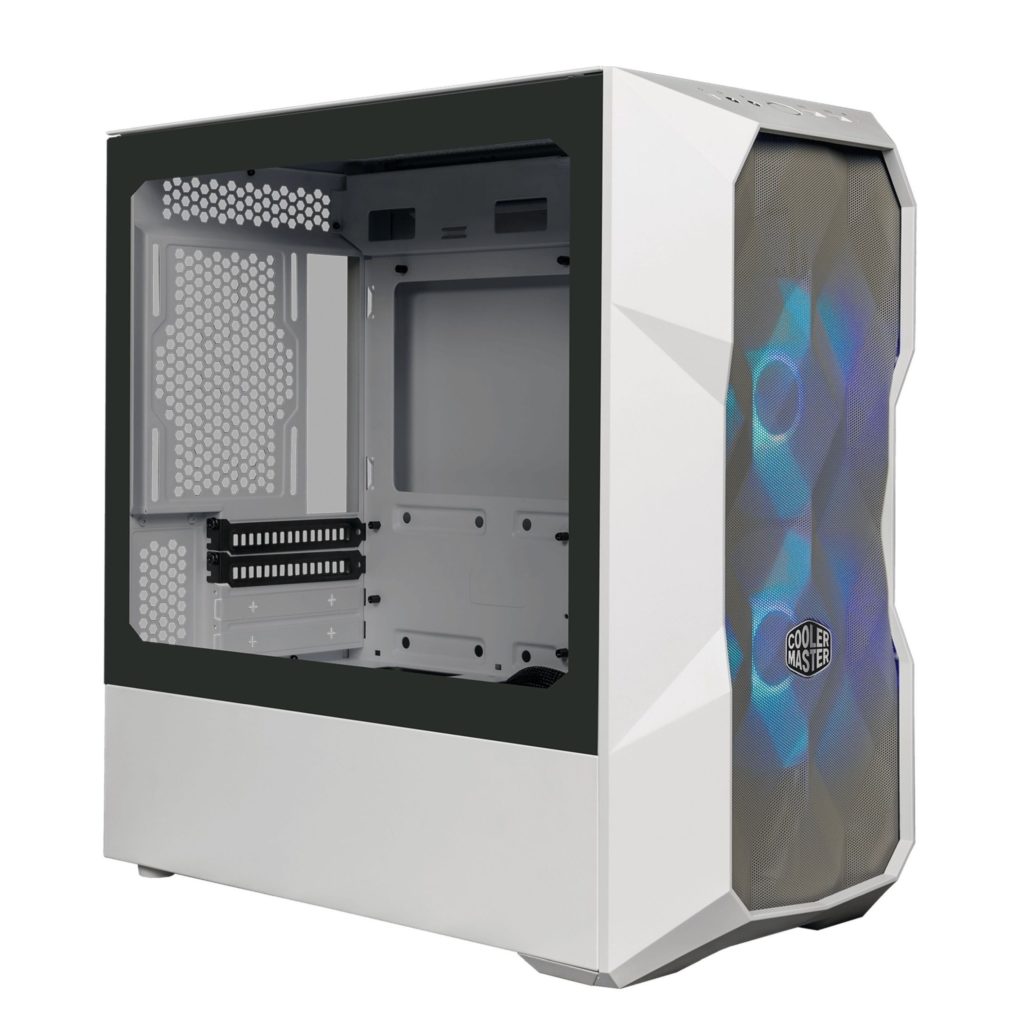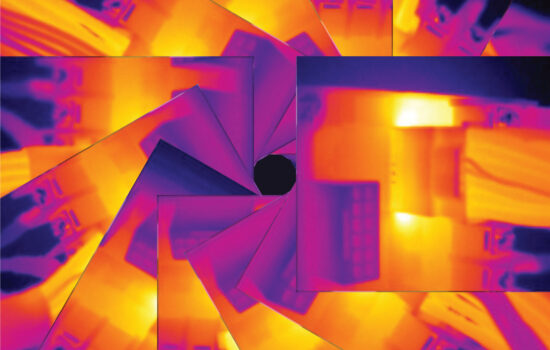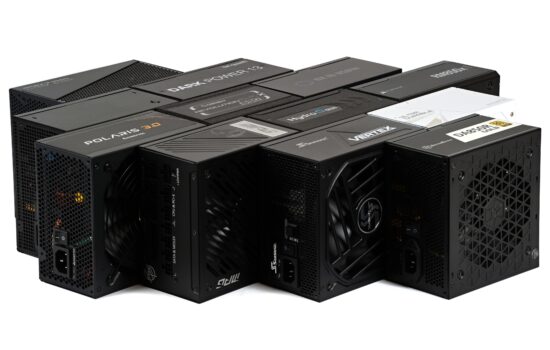HAF 500 and smaller and larger MasterBox
The legendary HAF series of cases is getting more extensive with an upgraded model that has 200-millimeter fans, as well as adjustable graphics card cooling, for example. In addition to the main haul, Cooler Master also suddenly introduced the cheaper MasterBox 500 and MasterBox TD300 Mesh. That’s the smallest case of the trio, but even at 38 litres, it can fit two large liquid cooler radiators.
By the time Cooler Master moves to adjust the layout of the individual elements in their cases according to the current needs, it is sometimes too late. That’s why it once lost the lowest class (Elite cases) with a very significant market share. In the spirit of sometimes, late is better than never, the HAF range is now extended by the 500 model. Size-wise, at 58.9 litres, it’s between the HAF X (75.6 litres) and the HAF 912 (54.8 litres), to which it’s considerably closer. In terms of support, however, the HAF 500 outperforms the considerably larger HAF X.
The extension with mounting positions for large radiators is key. You can also put two 360 mm radiators side by side (one to the front, one on the ceiling). The older HAF X and HAD 912 had virtually no room for radiators at all. The new HAF 500, at 516×224×510 mm, is significantly smaller than the HAF X, but retains support for E-ATX with no restrictions on width. But because the HAF 500 is 40 mm lower, it no longer supports the XL-ATX format (with a height of over 304 mm), unlike the X model. Naturally, support for 5.25″ devices has also dropped out, which has gradually been sidelined.
You’ll also install less one inch storage, which is also being pushed out by SSDs in the M.2 format in mainstream PC builds. However, four inch storage units are still supported. These can either be all 2.5″ or a combination of two 2.5″ with two 3.5″. The two sleds within the bottom tunnel support both formats. This brings us to the fact that the interior of the HAF (500) cabinet is also “trendily” divided into two sections. One is made up of a tunnel for the ATX power supply (with a depth of up to 180 mm) and the other for the rest of the components. Tower coolers, by the way, are compatible up to a height of 167 mm and the graphics cards can theoretically be up to 410 mm. This is in addition to the installed intake fans. There are two of these at the front and they have a more than standard size of 200 mm.
The remaining two fans are of the more common, 120 mm format. But one of them has a rather unusual position. It is directed to blow on the graphics card. Its inclination can be adjusted to suit individual needs. The second 120 mm fan is then traditionally at the rear, at the exhaust. These are the SickleFlow PWM ARGB models that you’ll encounter later in our tests. All fans are illuminated and as part of the accessories, the case also comes with a central hub from which you can power the LEDs.
But it seems that the MasterBox 500, and this is another new addition, will have a more multifunctional hub – also for connecting fan motors via PWM connectors. The MasterBox 500 is a smaller enclosure (505 × 209 × 499 mm) with a volume of 51 litres, but it still supports motherboards up to E-ATX format. Here, however, with a small limitation, namely up to 272 mm in width. However, only boards with two CPU sockets, for example from Supermicro, exceed this. Compared to the HAF 500, the MasterBox 500 even has two extra 2.5″ SSD/HDD bays (six in total), with the addition that mounting of two 3.5″ storage bays is still supported.
Again, two long radiators up to 360 mm are supported, but with a note. The ceiling one together with the fans should not exceed 55 mm in thickness. Otherwise there could be a collision of the cooler with the VRM heatsinks on the motherboard. A tower cooler is supported up to 165 mm (so some higher models may already collide with the side panel), the length of the graphics cards is still unrestricted. There are two fans here, 120-millimeter ones in the traditional scheme of one intake and one exhaust. As with the HAF 500, the grille in front of the input fan is perforated, with a large open area. Regarding USB ports, the MasterBox 500 has two standard 3.2 gen. 1 ports. Compared to the HAF 500, however, this case lacks a 10-gigabit USB-C port.
The cheapest of this trio of new additions, however, paradoxically has a USB-C port. We’re talking about the Masterbox TD300 Mesh, which is characterized by a perforated mask with polygonal articulation. Something similar to what you may recognize from the Fractal Design Meshify. Masterbox TD300 Mesh supports only Mini-ITX and Micro ATX motherboards.
Dimensions with feet are 367 × 210 × 410 mm. This means that this cabinet no longer has such a generous space for convenient mounting of graphics cards. But you can still install even the most powerful models that do not exceed 344 mm. A tower cooler is supported up to 166 mm, or alternatively, you can use liquid coolers to cool the CPU or graphics card, or both components at the same time. These can work again in pairs, 280 mm behind the front panel and a second such (280 mm) on the ceiling.
There can be four internal storage of inch formats, in the same configuration as the HAF 500 (i.e. 4× 2.5″ or 2× 2.5″ + 2× 3.5″), there are two fans – SickleFlow PWM ARGB. However, they are both pre-installed on the intake, so CM counts on you adding your own fan at the back (there is a free 120 mm position available) or having an AIO cooler fulfill the role of the system fan on the exhaust. Cooler Master lists 18-24 mm of space for cable management between the motherboard tray and the side panel for this case. At this price range, you can see at a first glance the elements that have been skimped on. For example, even just in terms of the PCI Express covers, half of which are only pop-out .
The recommended retail price for the HAF 500 is 157 euros, for the MasterBox 500 it is 119 euros and finally 89 euros for the MasterBox TD300 Mesh. The HAF 500 and MasterBox TD300 Mesh are available in both black and white. The MasterBox 500 is black only.
English translation and edit by Jozef Dudáš





